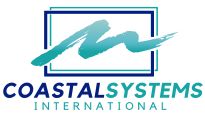Sustainability
Building at the water’s edge brings enormous opportunity—and enormous responsibility. At Coastal Systems, sustainability isn’t just a feature of our projects; it’s the foundation they’re built on. Every decision we make considers the long-term health of coastal environments, local communities, and the economy. Our approach to sustainable waterfront development ensures that today’s investments can stand strong tomorrow, delivering value without compromising the natural resources that make these destinations special.
Designing for Coastal Resilience
Coastal environments are dynamic by nature, shaped by tides, storms, and rising sea levels. That’s why every project we take on is designed for resilience. Our team assesses coastal hazards—like erosion, storm surge, and sea-level rise—early in the planning process to ensure that structures and landscapes can withstand the forces of nature. We incorporate measures like elevated structures, breakwaters, revetments, and living shorelines that protect the built environment while allowing natural systems to thrive.
We also prioritize flexible site layouts that can adapt over time. For instance, green infrastructure solutions, such as permeable pavements and bioswales, help manage stormwater naturally. Elevated boardwalks protect sensitive ecosystems while maintaining public access. By designing with change in mind, we help clients minimize risk and ensure the long-term viability of their waterfront assets.
Eco-Friendly Materials and Systems
Material selection is a critical piece of sustainability. We favor low-impact, locally sourced, and durable materials that perform well in coastal conditions. Recycled-content decking, corrosion-resistant fasteners, sustainably harvested wood, and low-VOC finishes are just a few of the specifications we commonly include. Choosing the right materials reduces maintenance needs, lowers lifecycle costs, and minimizes environmental disruption.
Our systems approach to sustainability also extends to energy and water use. Solar-powered lighting, rainwater harvesting systems, native landscaping for reduced irrigation, and energy-efficient HVAC solutions are integrated wherever possible. For larger projects, we explore microgrids, off-grid energy options, and desalination plants to support truly sustainable development even in remote settings.
Protecting Natural Habitats
We believe the health of the surrounding environment is as important as the development itself. That’s why we work closely with environmental scientists to preserve and enhance critical coastal habitats. We often incorporate habitat restoration as part of our project scope, restoring mangroves, seagrasses, dunes, or reef systems that protect shorelines and improve biodiversity.
Buffer zones, wildlife corridors, and careful construction timing help minimize disturbance to sensitive ecosystems. Education is also key—interpretive signage, native plant gardens, and public programs help visitors understand and appreciate the natural environment, turning passive use into active stewardship. Our goal is to not just minimize impact, but to create projects that leave the land better than we found it.
Compliance and Certifications
Waterfront development must meet strict environmental regulations, and we guide our clients through that process with expertise. Whether it’s securing coastal construction control line permits, complying with FEMA floodplain regulations, or achieving LEED or SITES certification, we manage the details to ensure projects move forward smoothly and responsibly.
We also incorporate resilience certification standards and climate adaptation strategies that future-proof developments against both regulatory shifts and environmental changes. Sustainable design is not just about today—it’s about building smart for the future.
Realizing Visions for over 30 years
